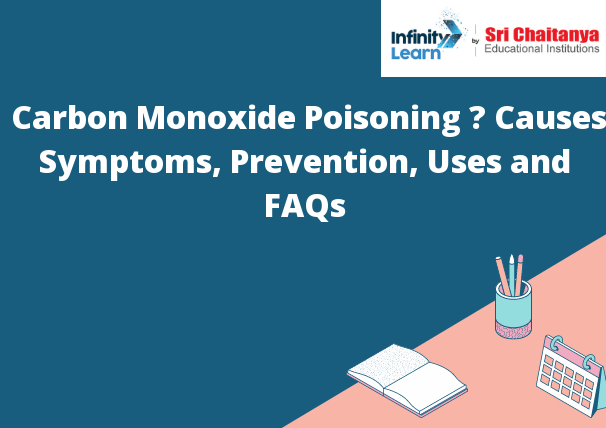Table of Contents
What is Carbon Monoxide? ; Uses of Carbon Monoxide ;
Hazards of Carbon Monoxide
Carbon Monoxide is a colorless, odorless, and tasteless gas that is slightly heavier than air. It is produced when carbon-containing materials such as coal, oil, natural gas, wood, and charcoal are burned. Carbon monoxide can cause death by suffocation because it displaces oxygen in the blood. It is also a leading cause of accidental death in the home. Carbon monoxide detectors are now required in most homes. Carbon monoxide is also used as a refrigerant, an industrial solvent, and a welding gas. Carbon monoxide is a hazardous gas that can cause death by suffocation.

Causes of Carbon Monoxide Poisoning
Carbon monoxide is an odorless, colorless gas that can cause death by asphyxiation. It is produced by the incomplete combustion of fuels such as gasoline, kerosene, natural gas, coal, and wood. Symptoms of carbon monoxide poisoning include headache, nausea, vomiting, shortness of breath, and confusion. Carbon monoxide can be prevented by installing and maintaining a working carbon monoxide detector, ensuring that appliances are properly vented, and never using a portable generator indoors.
Carbon Monoxide Poisoning Symptoms
Symptoms of carbon monoxide poisoning can vary, but often include headache, nausea, vomiting, and dizziness. Carbon monoxide can also cause confusion, drowsiness, and loss of consciousness. If you experience any of these symptoms, get to fresh air and seek medical attention immediately.
Carbon Monoxide Poisoning Prevention
Carbon monoxide is a poison that is produced when fossil fuels such as gasoline, oil, kerosene, wood, or coal are burned. Carbon monoxide can cause death by asphyxiation (suffocation).
To prevent carbon monoxide poisoning:
-Never use a charcoal grill, hibachi, or portable stove indoors.
-Never run a car or truck in a closed garage.
-Never use a gas oven to heat your home.
-Install a carbon monoxide detector in your home.
Unsafe Level of Carbon Monoxide
in a Building
If the level of carbon monoxide in a building is unsafe, it is important to take action to reduce the levels as soon as possible. Some steps that can be taken to reduce levels of carbon monoxide in a building include:
• Ensuring that all appliances and equipment that produce carbon monoxide are properly ventilated
• Ensuring that chimneys and exhaust vents are clear and not blocked
• Installing carbon monoxide detectors in areas where people spend a lot of time
If levels of carbon monoxide remain high, it may be necessary to evacuate the building until the levels can be reduced.
1. Metallurgy
Metallurgy is the process of working with metals to create useful objects. The metals are first purified, then melted and shaped into the desired form. Metallurgy has been used for thousands of years to create tools, weapons, and other objects.
2. Niche Uses
While WordPress is great for a wide variety of websites, it does have some specific niches where it excels.
For example, WordPress is popular for creating:
Blogs
News websites
E-commerce stores
Portfolios
3. Customizability
Explain Why it is Dangerous to Inhale Carbon Monoxide?
Carbon monoxide is a colorless, odorless, and tasteless gas that can be deadly to humans. It is produced when fuels such as gasoline, wood, coal, or natural gas are burned. When breathed in, carbon monoxide can replace oxygen in the blood, leading to tissue damage and death. Symptoms of carbon monoxide poisoning include headache, dizziness, nausea, and vomiting.





